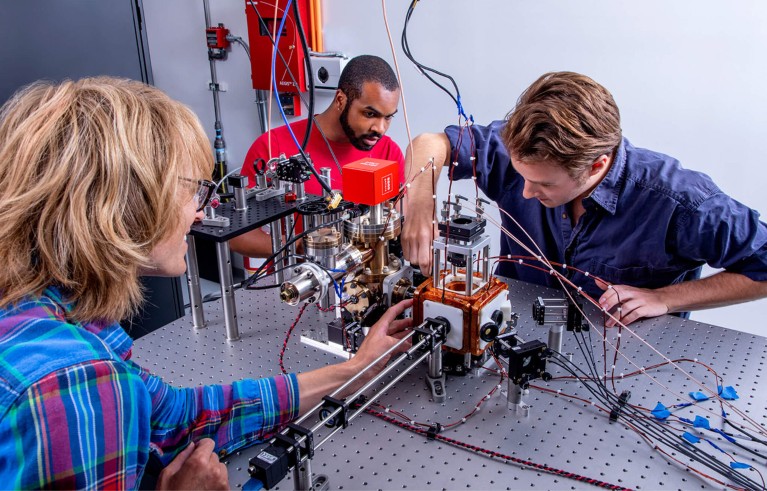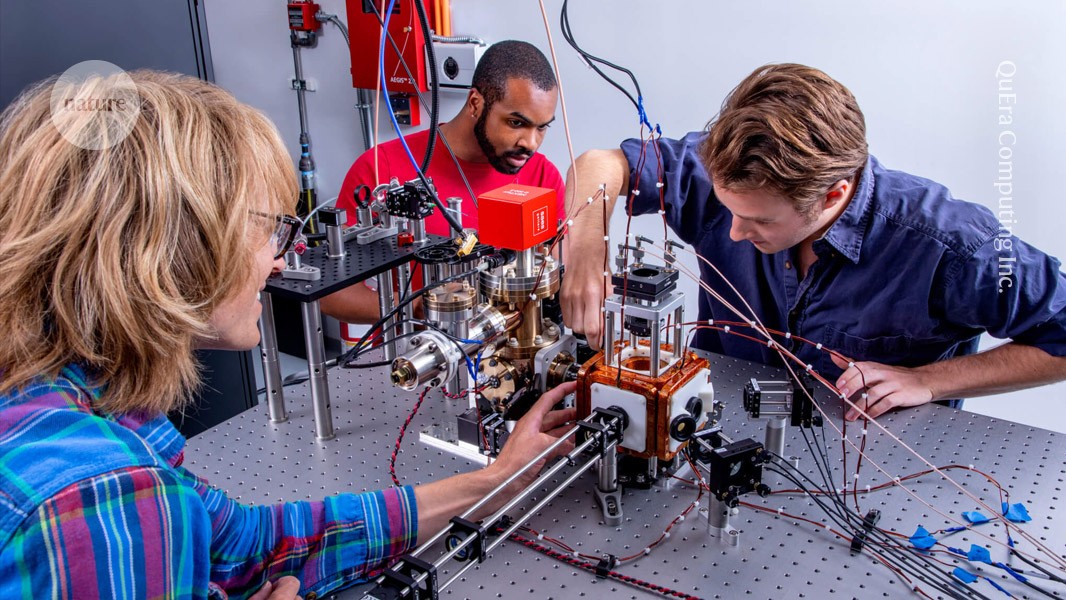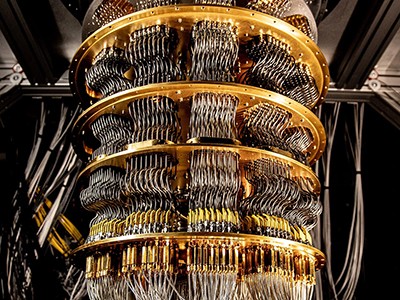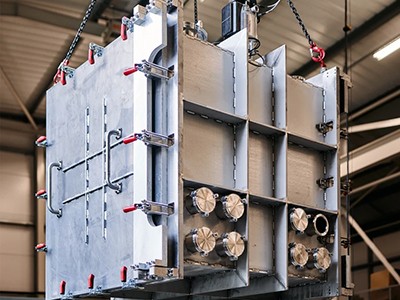
The company QuEra has raised US$230 million in funding — one of the largest single investments in any quantum firm.Credit: QuEra Computing Inc.
A technology once feared too error-prone to underlie a quantum computer is hitting the big time.
QuEra, an academic spin-out company that uses atoms and lasers to encode quantum bits or ‘qubits’, announced on 11 February that it has raised US$230 million in funding — one of the largest single investments in any quantum firm so far. Other companies using a similar technology to build machines — called neutral atom quantum computers — are also making gains on industry leaders such as IBM.
‘A truly remarkable breakthrough’: Google’s new quantum chip achieves accuracy milestone
Neutral atom technology “is catching up”, says Doug Finke a computer scientist who works at business-analysis firm Global Quantum Intelligence in Orange County, California. “As far as we know this is the largest venture investment in a neutral-atom company.”
Neutral atoms are stable and can remain in their quantum states without bulky cooling systems. These are features that should make them excellent qubits, the building blocks of a quantum computer, equivalent to classical bits of information. But for years, progress in neutral atom quantum computing was stymied by how precisely physicists could coax the particles to carry out calculations.
Quantum race
Advances in ways to configure and control the atoms since 2019 mean that operations are now close in accuracy those in other hardware types. “Over the past few years, we’ve seen major breakthroughs,” says Wenchao Xu, a physicist at the Swiss Federal Institute of Technology in Zurich (ETH Zurich). “There is definitely a lot of excitement.”
Atom-based quantum computers are catching up to firms such as IonQ or Google that use trapped ions or tiny superconducting circuits to represent quantum states. QuEra in Boston, Massachusetts, is not alone in pursing neutral atom technology: Atom Computing in Berkeley, California, Infleqtion in Boulder, Colorado, and Pasqal in Massy, France, have created machines with hundreds of qubits.
This billion-dollar firm plans to build giant quantum computers from light. Can it succeed?
Their road maps to grow the number of interacting qubits are among the industry’s most aggressive. Making a computer that can start to perform useful calculations will probably take tens of thousands of qubits, working together to overcome errors that are inherent to quantum systems.
QuEra spun out of research at Harvard University and Massachusetts Institute of Technology, both in Cambridge. In its system, physicists trap an array of rubidium atoms using laser light and store quantum information in the energy levels of their electrons.




